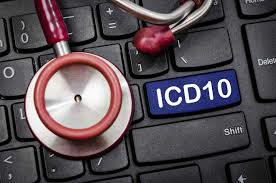Introduction
Fibroids and fibromyalgia are two distinct medical conditions that affect many people, especially women. While they are separate issues, the symptoms of fibroids and fibromyalgia can overlap, leading to confusion and challenges in diagnosis and treatment. Understanding the connection between these conditions can help patients manage their symptoms more effectively. This blog post explores the potential link between fibroids and fibromyalgia, their symptoms, diagnosis, and strategies for managing both conditions.
Understanding Fibroids
What are Fibroids?
Fibroids, also known as uterine fibroids or leiomyomas, are noncancerous growths that develop in or on the uterus. They are composed of muscle and fibrous tissue and vary in size from tiny seedlings to large masses that can distort and enlarge the uterus.
Common Symptoms
- Heavy Menstrual Bleeding: Extended periods or heavy flow.
- Pelvic Pain: Persistent or intermittent pain in the pelvic area.
- Frequent Urination: Pressure on the bladder causing frequent urination.
- Constipation: Pressure on the bowel leading to difficulty in bowel movements.
- Back and Leg Pain: Pain radiating to the back and legs.
Causes and Risk Factors
The exact cause of fibroids is unknown, but factors such as hormonal changes, genetics, and certain growth factors play a role. Risk factors include age, family history, obesity, and ethnicity, with African American women being more prone to developing fibroids.
Click Here to Visit the Store and find Much More….
Understanding Fibromyalgia
What is Fibromyalgia?
Fibromyalgia is a chronic condition characterized by widespread musculoskeletal pain, fatigue, and a range of other symptoms. The exact cause of fibromyalgia is not fully understood, but it is believed to involve a combination of genetic, environmental, and psychological factors.
Common Symptoms
- Widespread Pain: Persistent pain affecting multiple areas of the body.
- Fatigue: Chronic tiredness that does not improve with rest.
- Sleep Disturbances: Difficulty falling asleep, staying asleep, or achieving restorative sleep.
- Cognitive Issues: Problems with memory, attention, and concentration, often referred to as “fibro fog.”
- Other Symptoms: Headaches, irritable bowel syndrome, and mood disorders such as anxiety and depression.
Potential Link Between Fibroids and Fibromyalgia
Symptom Overlap
While fibroids and fibromyalgia are distinct conditions, their symptoms can overlap, making it challenging to differentiate between them. Both conditions can cause chronic pain, fatigue, and emotional distress, complicating the diagnosis and management process.
Hormonal Influence
Hormonal imbalances, particularly involving estrogen, are thought to play a role in both fibroids and fibromyalgia. Estrogen promotes the growth of fibroids, and hormonal fluctuations can exacerbate fibromyalgia symptoms. Understanding these hormonal influences can help in developing effective treatment plans for patients with both conditions.
Chronic Pain and Stress
Both fibroids and fibromyalgia involve chronic pain, which can lead to significant stress and anxiety. This stress can further exacerbate symptoms, creating a vicious cycle. Managing stress and chronic pain is crucial for improving the quality of life for patients dealing with both conditions.
Diagnosis and Management
Diagnosis
Diagnosing fibroids typically involves a pelvic exam, ultrasound, or MRI to visualize the uterus and identify any growths. Fibromyalgia is diagnosed based on a patient’s medical history, symptoms, and a physical exam, with a focus on identifying tender points.
Treatment Options for Fibroids
- Medications: Hormonal treatments to regulate menstrual cycles and reduce symptoms.
- Non-invasive Procedures: MRI-guided focused ultrasound surgery (FUS) to destroy fibroid tissue.
- Minimally Invasive Procedures: Uterine artery embolization (UAE) to cut off blood supply to fibroids, causing them to shrink.
- Surgical Options: Myomectomy to remove fibroids while preserving the uterus or hysterectomy to remove the entire uterus.
Treatment Options for Fibromyalgia
- Medications: Pain relievers, antidepressants, and anti-seizure drugs to manage symptoms.
- Physical Therapy: Exercises to improve strength, flexibility, and stamina.
- Counseling: Cognitive behavioral therapy (CBT) to manage stress and improve coping strategies.
- Lifestyle Changes: Regular exercise, healthy diet, and good sleep hygiene.
Integrated Management Strategies
For patients dealing with both fibroids and fibromyalgia, integrated management strategies are essential. These include:
- Holistic Approaches: Combining medical treatments with alternative therapies such as acupuncture, massage, and yoga.
- Stress Management: Techniques like mindfulness, meditation, and relaxation exercises to reduce stress and improve mental health.
- Personalized Care Plans: Working with healthcare providers to develop individualized treatment plans that address both conditions and their symptoms.
Click Here to Visit the Store and find Much More….
FAQs
Can fibroids cause fibromyalgia?
There is no evidence that fibroids cause fibromyalgia. However, both conditions can coexist and share overlapping symptoms, such as chronic pain and fatigue.
How are fibroids and fibromyalgia diagnosed?
Fibroids are diagnosed through pelvic exams, ultrasounds, or MRIs, while fibromyalgia is diagnosed based on medical history, symptoms, and physical exams focusing on tender points.
What are the treatment options for fibroids?
Treatment options for fibroids include medications, non-invasive procedures like MRI-guided focused ultrasound surgery, minimally invasive procedures like uterine artery embolization, and surgical options such as myomectomy or hysterectomy.
What are the treatment options for fibromyalgia?
Treatment options for fibromyalgia include medications, physical therapy, counseling, and lifestyle changes such as regular exercise, a healthy diet, and good sleep hygiene.
Can hormonal imbalances affect both fibroids and fibromyalgia?
Yes, hormonal imbalances, particularly involving estrogen, can influence the development and symptoms of both fibroids and fibromyalgia.
How can I manage both fibroids and fibromyalgia effectively?
Effective management includes a combination of medical treatments, holistic approaches, stress management techniques, and personalized care plans developed with healthcare providers.
Conclusion
Understanding the connection between fibroids and fibromyalgia is essential for managing these conditions effectively. While they are distinct, the overlapping symptoms can complicate diagnosis and treatment. By recognizing the potential link and employing integrated management strategies, patients can improve their quality of life. Working closely with healthcare providers to develop personalized care plans and incorporating holistic approaches can make a significant difference in managing both fibroids and fibromyalgia.

Click Here to Visit the Store and find Much More….
For More Information Related to Fibromyalgia Visit below sites:
References:
Fibromyalgia Contact Us Directly
Click here to Contact us Directly on Inbox
Official Fibromyalgia Blogs
Click here to Get the latest Chronic illness Updates
Fibromyalgia Stores









